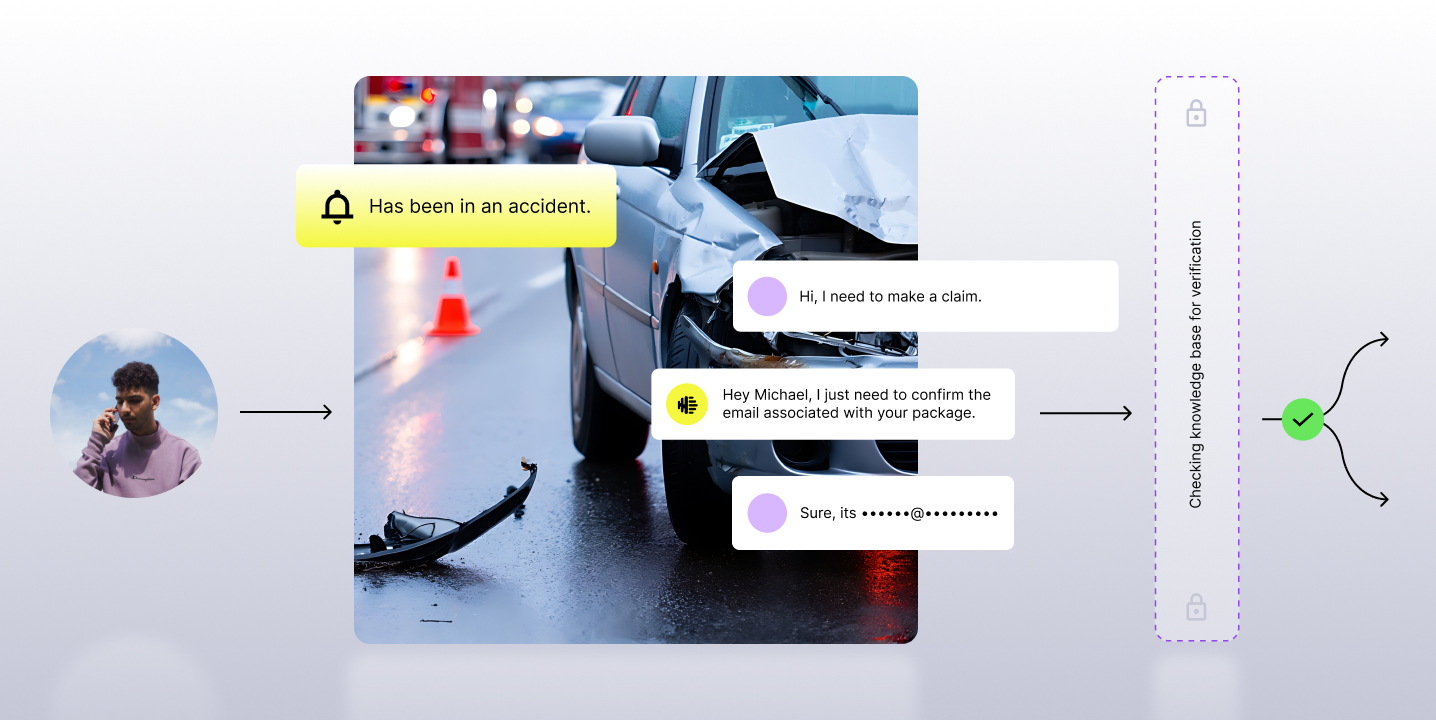With the pandemic changing the business landscape overnight, we suddenly were faced with a slew of challenges that we’d need to solve over the year.
For one, our contact center had to go remote, and fast. With that transformation, we needed to find new effective methods for evaluating and coaching agents, understanding changes in customer interaction quality, and handle the unexpected surges in customer queries with our newly remote team.
I’m sure we’re not the only contact center faced with these challenges, and needing to quickly adapt to the new world of work.
The name of the game was QA efficiency, and I’ll walk you through how we reinvented it in our new situation.
- How we produced greater output with our transitioned workforce
- How we encouraged adoption of new technology across our organization
- How we measured the impact across teams.
Let’s dive in!
How we upped productivity and efficiency across our team

We currently only have three QAs on our team, which when you look at our agent to analyst ratio, is definitely on the lower side. Yet, our QAs are able to operate with incredible efficiency, and that success lies in our use of QA automation.
How?
To understand, we need to first look at the way things were before we focused on automation (in our case, integrating Observe.AI). Our workflows were manual and tedious. Here are some examples of how our departments operated:
- QA Evaluations
It was all manual. Our QA’s evaluated only 0.2% of all interactions leading to skewed data and dissatisfaction amongst agents. These evaluations were time consuming and spread across multiple tools. The skewed data never gave us an accurate understanding of agent performance. - Generalized coaching programs
We had a one-size-fits-all coaching program. These weren’t tailored to address the weakness and strengths of individual agents. The generalized programs left the agents to figure out their areas of weaknesses for themselves, while the lack of visibility and physical presence on the contact center floor was already spreading the coaches too thin.
- Manual sentiment analysis:
Understanding the overall customer sentiment is the biggest reflection of any contact centers’ efforts. Due to skewed data, we were unable to accurately gauge how customers truly felt. Our results were anecdotal, subjective and we’d have to wait for NPS to understand this better.
So we turned to Observe.AI, which gave us an opportunity to work smarter and more efficiently despite our limitations. Here’s what’s empowering:
- Automatic sentiment analysis on 100% interactions with a transcription accuracy at 82%+
- AI-driven agent evaluations and QM processes
- Automated agent performance and coaching workflows.
What we're doing now remotely with our remaining staff is encouraging them to use the tool. Bringing me to my next point.
How did we encourage organization-wide adoption of new technology?

I’d like to call Observe.AI a technological atomic bomb.
People are really accustomed to their old ways of working. Not everyone in this industry is ready for Contact Center AI that’s so efficient, new and a refreshing change from the usual CCaaS legacy systems.
As a manager, I understand change is difficult no matter how good it is for you, but my team was comfortable using the earlier tools. So when it came to shifting and beginning to use the Observe.AI, initially there was always an excuse for not using it. Things like “the worlds don’t make sense in this small snippet,” or “this is a bit tedious.”
You know they want to stand their comfort level, but it’s a short term problem.
I chose a different route. I simply encouraged my team to look for opportunities that make it more useful for them, as opposed to sticking to the old ways.
This afforded them to become more open-minded. Instead of “I need to get on board”, it was about “how do I solve my own problems?”

For example, my team realized they don’t need to work hard to listen to customer interactions over and over again, multiple times. If they could teach the AI to listen, the initial helping hand, it’ll automatically become more useful for them.
They embraced this value add. It was baby steps but our QAs, supervisors, and agents eventually committed to the platform and enjoyed the luxury of working smarter, not just harder.
The bottom line is that at the end of the day tools like Observe.AI are here to help you focus on objectives that matter.
Your job is to ensure everyone sees the benefit on an individual level and from a business perspective.
How did effective coaching impact Group 1 Automotive?

One feature that’s really helped us power through remote work is the Agent Performance and Coaching suite of features.
To replicate the on-site culture of contact center floors is hard. You had the buzz, managers listening in on calls, and providing instant feedback. Now it’s managers remotely managing agents and coaches remotely trying to guide agents, with almost no visibility into that agent’s performance.
The coaching features have enabled accountability and transparency across our team. It has unlocked a new way of work and that’s exponentially increased the impact we see every day.
And simply put, it creates a powerful trifecta for our team.
- Coaches
So many benefits. Coaches can read QA evaluations at their own pace, customize coaching workflows, leave coaching notes, and prioritize coaching schedules for bottom performing agents. New coaches have instant visibility into any agent’s performance history, and can be easily onboarded. It’s so smooth and automated that the focus is only guiding and mentoring the agents.
- Agents
Inside the Observe.AI dashboard, agents have access to their own calls. They can listen, review and self-evaluate. They can also access their QA evaluation forms, see the evaluator, access coaching notes, coaching session schedule and an actionable plan.
Agents often raise concerns about how their evaluations are nitpicky and looking for something negative. Introducing this level of transparency, you can show how the platform will continuously improve their performance, whether it be agent empathy statements, or average handle time (AHT), and automatically bring that commitment.
Post Observe.AI, we’ve had zero dispute requests. That’s massive trust in the system.
- Managers
They’re no longer required to be on-site, require space or constant team interactions. The manager can review the evaluations, read suggestions at their own pace and accordingly develop a performance improvement plan for the entire team.
Change is hard but it also means growth. At Group 1 Automotive, we’re seeing continuous improvement in our contact center. Safe to say, after experiencing the power of AI and a superior technology like Observe.AI, there has been no looking back.
We’re at the cusp of an AI revolution, and embracing this new world of work is truly rewarding.

















